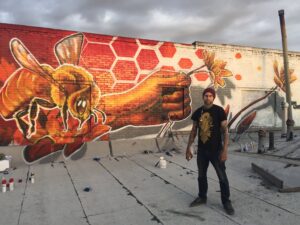It’s a tough time to be a kid. With the physical and emotional stressors of a global pandemic, war, racial inequality, climate change, species extinction, and the digital age, pediatricians warn that the mental health crisis among kids has risen to a national emergency. An unprecedented number of children & young adults are suffering from soaring rates of depression, anxiety, trauma, loneliness, and suicidality.
Animation production company Wonder Media has made it their mission to do something about it, creating animated stories to reach young people in trauma. Tackling difficult subjects such as cyberbullying, sexual abuse, suicide, hunger, and even the dangers facing Ukrainian refugee children, Wonder Media’s animations are making difficult subjects easy(er) to discuss.
Thank you to Terry Thoren, CEO, Wonder Media, for sharing his work and mission with us and for engaging in this critical conversation.
Key Takeaways
Communicate Complex Problems Simply
Terry Thoren’s early life experiences as an emancipated minor drove his passion to become a filmmaker who creates films that connect deeply with an audience. After a winding road to Hollywood, Terry became the CEO of Klasky-Csupo, Inc – the animation studio behind series like Rugrats, The Wild Thornberrys, and the early seasons of the Simpsons. In these popular animations, he created characters that resonated with a wide range of audiences and cleverly illustrated tough social and emotional issues through the lens of family dynamics. After years of success, Thoren left Hollywood to launch a mission to use animated stories to prevent childhood trauma, help children and teens navigate out of trauma and model social emotional learning for children in grades PreK to 12th grade. These animations “communicate complex problems simply” and serve as a tool for adults to engage children and young adults in difficult conversations.
Thoren sees a parallel between his mission and that of Zoos & Aquariums. The problems facing animals and ecosystems are complex and often paradoxical to the entertaining, comfortable, enjoyable day out visitors expect to share with their families and friends at their local zoo or aquarium. By using animation, organizations can realize lasting emotional connections that build relationships and trust, a foundation for imparting lessons, and activate change.
Animation Crosses All Borders
Without many of the constraints of reality, animation presents a unique and flexible opportunity to represent and reach diverse audiences. Animation isn’t limited by an actor’s native language or linguistics, ethnicity or background, access to exotic or hard to reach filming locations, or budget for special effects. Thoren spoke to the adaptation of two series – “The Protect Yourself Rules” and “Is Anybody Out There” to support children experiencing the trauma of war in Ukraine. Facing separation from family members during evacuations and exploitation by soldiers, children in the region have become fearful of adults. By partnering with the Ukrainian Child Rescue Service, the series has been translated to Ukranian and made available at refugee camps, in classrooms, and play in subway stations throughout the region, connecting children to vital resources and support networks.
Not Just for Children – Animation Connects with All Ages
“Story is character and character is story”, says Thoren. In his eyes, character development is foundational to success in engaging audiences with animated characters and establishing character backgrounds early is key to making audiences want to follow characters. One of Thoren’s widely popular shows – The Wild Thornberrys – followed the family of a British nature documentary television host as they traveled the world. The main character is his youngest daughter, Eliza, who can communicate with animals. As a pre-teen, Eliza is living on the road with her family during the turbulent transitional period between elementary and middle school. However, this series had characters that resonated with a many – the always enthusiastic father of two and an adopted son; the supportive and caring mother; and Eliza’s teenage older sister. Though animation is often thought of as for children, characters and stories can be crafted to connect with any age.
Harnessing the Power of Animation to Advance the Mission of Zoos
For more than a century, cartoons & animation have been woven throughout the fabric of cultures around the world. Wildly popular animated characters like Mickey Mouse, Spiderman, and Bugs Bunny have captured our attention and imagination and extend beyond the screen. Children of all ages crave connections to characters in all aspects of life. We engage with characters at school, at home, in the clothes we wear, and in play. Thoren suggests that by using animation to develop characters that connect Zoo & Aquarium audiences to conservation and the animals in their care through empathy and emotion, Zoos & Aquariums can build relationships that both encourage repeat visitation and foster deep connections that extend beyond a visit. When activated for action on behalf of wildlife and wild places, these connections can lead to lasting, meaningful change.




